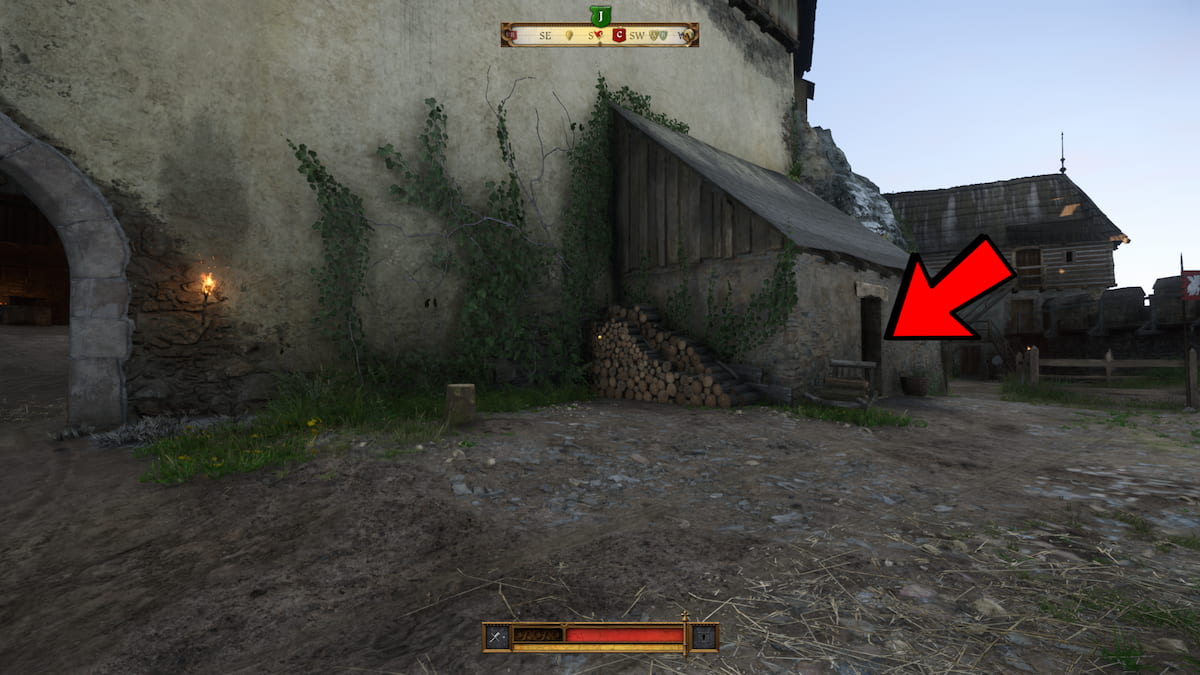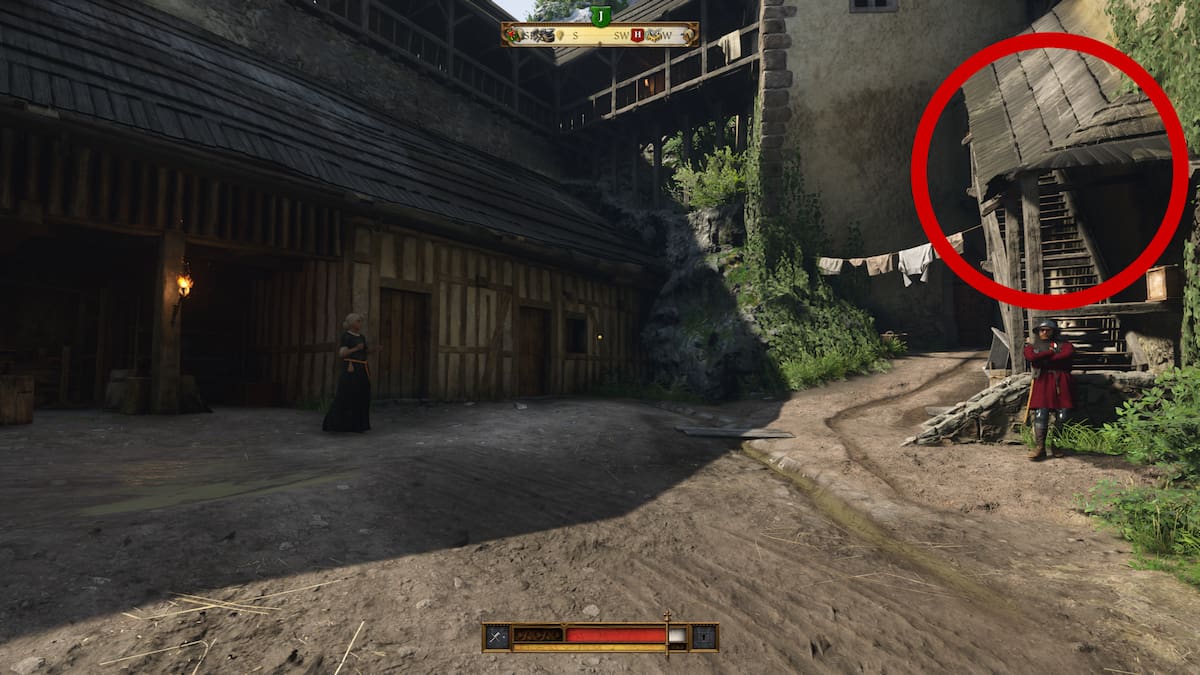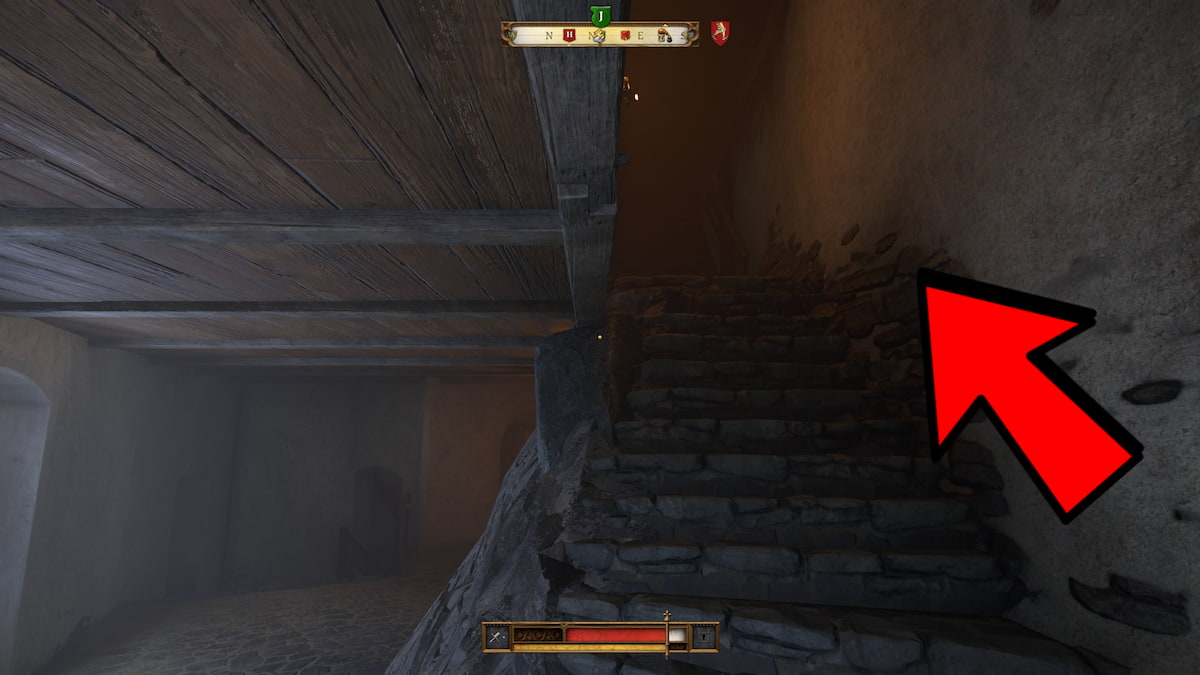From Whom the Bells Tolls mission has to be one of the most chore-heavy questlines as you complete one mundane task after another. Hauling the sack to the charcoal shed will be the first objective, and we’re here to show you how to complete it in Kingdom Come: Deliverance 2.
Table of contents
KCD2 Haul sacks to the charcoal shed quest guide
When it’s time to haul the sacks to Trosky Castle, the guard will tell you to put them into a mysterious charcoal shed. Unfortunately, the game doesn’t really tell you where this location is, so you may end up walking around aimlessly like I did. If you aren’t sure where to go, pick up the sack and walk to the entrance to the wagon’s right.

Travel up this hill until you reach the shed on the left side. Due to Henry’s slow walking speed, it’ll be slightly tedious to perform. I definitely know the struggle, and I almost fell asleep with the sluggish movements.

Once you’ve reached the shed, place the sack on the wooden board inside. You must deliver three sacks in total to complete this optional quest in From Whom the Bells Tolls. Even though it’s considered optional, it’s pretty crucial to do it for the main objective of saving Sir Hans. It’ll unlock the blacksmith in Trosky Castle, paving the way for the rest of the mission. You’ll have to complete many more chores after this, but luckily, there is a way to make the process go by faster. Read below to find out how.

How to save Sir Hans quickly in From Whom the Bells Tolls quest
You can complete the remainder of the From the Bells Tolls mission in a few different ways. I’ve seen some players use the route with the Chamberlain, but others (including myself) have trouble persuading him. The only one that worked for me was the pathway that Reddit user XxBluesShadowxX used, which seems to be the quickest method. Here are the steps you can take to complete the From the Bells Tolls quest quickly in Kingdom Come: Deliverance 2:
- Speak to the blacksmith and tell him, “I’ll help you with anything!”
- Go to the Smithy and interact with the chest to the right to get the resources for the horseshoe recipe
- Rob or interact with the red pot near there to get a free lockpick (you can talk to the Cook Fanka and the blacksmith if you don’t want to get caught robbing)
- Craft the Farmer’s horseshoe at the Smithy and talk to the blacksmith when you’re done
- Give the horseshoe to Kabat
- Ask Kabat, “What did you do before?” then talk about acquiring a tool
- Instead of buying the lockpicks, ask if you can do something in exchange
- Accept to help him get the rosemary back from Father Nicodemus (you don’t have to actually get the rosemary, but it’s still crucial to accept it)
- Talk to Father Nicodemus to play dice for the rosemary (again, you don’t need to play for it, but it’s essential to know that he has the rosemary)
- Tell Jarek (the man kneeling next to the Smithy) that Father Nicodemus stole the rosemary and follow him to get to Thomas
- Go back downstairs and steal some food from the pantry on the way down
- Return to the Smithy and take right to go up the stairs
- Bribe the guard there with the food you’ve stolen
- Sneak up the stairs and go all the way to the top
- Talk to Katherine inside the room on the right and ask her for help (it’s okay if you fail to persuade her)
- Wait for her to leave and grab the Physicians’ Journal to learn how to make the Fever Tonic recipe
- Use the lockpick on the chest there to gather the ingrdients
- Make the Fever Tonic at the alchemy table (I will discuss this more below)
- Return to Thomas to give him the Fever tonic
Getting the lockpick from the red pot should be one of your first steps. Since you can get caught robbing it, I suggest talking to the Cook Fanka and then the blacksmith to get free access to it.

Save the lockpick for later, and then work your way to Jarek through Kabat’s rosemary mini-quest. You can complete the sub-task of helping Cook Fanka and Kabat if you want, but remember that this quest has a time limit. The main focus here will be Jarek, who will be kneeling near the Smithy.

Once you get Father Nicodemus to confess about the stolen rosemary, you can tell Jarek about it to get you to Thomas. Keep note of Thomas’ location since you’ll need to return here shortly. This part will let you roam this particular building without the guard’s watchful eyes, but you’ll need to do a bit of sneaking when stealing the food.
Use this food to trick a guard in the upstairs room near the Smithy. Take the stairs to find him.

Now, sneak up the stairs where the guard used to be and go up to the top. You’ll eventually find a door there with Katherine inside. Ask her for help to get her out of the room. I failed to persuade her, but she didn’t bother to tell any guards about Henry’s whereabouts. Now, you can finally take the Physician’s Journal from the bookcase and loot the chest for Thomas’ Fever Tonic potion.

From Whom the Bells Fever Tonic recipe
If you aren’t sure how to make the Fever Tonic recipe in Kingdom Come: Deliverance 2, follow these steps:
- Add three handfuls of Feverfew
- Put the cauldron down and boil the Feverfew for two turns (use the bellows to make it boil)
- Put the cauldron back up
- Grind one handful of Elderberry Leaves and place in the cauldron
- Add two handfuls of Ginger
- Distill the potion
- Use a phial to make the potion
Even if you happen to mess up a few times with the potion, the From the Bells Tolls quest doesn’t penalize you for it. I made two mistakes of boiling it for too long and forgetting to distill, and it still worked. Then, you can finally give the potion to Thomas to trigger a cutscene, thus concluding this Kingdom Come: Deliverance 2 quest. Once it’s over, ensure to get one of the best horses from Hired Hand Kabat. The Lion’s Crest is also near Trosky Castle if you want a new gear set.





Published: Feb 7, 2025 06:33 pm